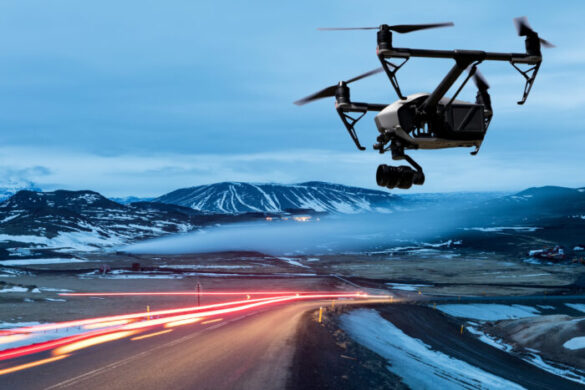In the aftermath of a car accident, the pursuit of justice and fair compensation often hinges on one crucial element: evidence. For years, accident reconstruction relied heavily on witness testimony, police reports, and often conflicting accounts. However, a new era is dawning in California personal injury law, driven by the increasing prevalence of video evidence. From personal dash cams to advanced law enforcement drones, visual recordings are rapidly becoming a game-changer, offering undeniable insights into how accidents unfold. At Westlake Injury Law, we understand that this shift is critical for our clients, and we are committed to leveraging every piece of available footage to strengthen your case and ensure you don't settle for less than you deserve.
The Growing Importance of Video Evidence in Accident Claims
The digital age has transformed accident investigations. What was once subjective and open to interpretation is now frequently captured with objective clarity.
Witness testimonies, while valuable, can be flawed. Memories fade, perspectives differ, and biases can inadvertently creep in. Video evidence, on the other hand, provides an unbiased, real-time record of events. It captures the precise movements of vehicles, the actions of drivers, and the immediate consequences of an impact. This objective visual information can often resolve disputes and clarify ambiguities that written reports or verbal accounts cannot.
Video footage can be a powerful tool for establishing fault. It can show a driver running a red light, swerving erratically, or failing to yield. Beyond liability, video can also help document the severity of an impact, showcasing the force involved and potentially corroborating the extent of injuries. This visual proof is far more compelling than mere descriptions when presenting your case to insurance adjusters or a jury.
Law Enforcement Drones: A New Eye in California Traffic Monitoring
The use of drones by law enforcement agencies is rapidly expanding, and California is at the forefront of incorporating this technology into traffic monitoring and accident investigation.
Where Drones Are Being Used in California
Various law enforcement agencies across California, including some divisions of the California Highway Patrol (CHP) and local traffic enforcement units, are increasingly deploying drones. These unmanned aerial vehicles (UAVs) are used for a variety of purposes, from monitoring traffic flow during peak hours to assisting with accident scene documentation. Their ability to cover large areas quickly and provide a bird's-eye view makes them invaluable.
How Drone Footage Can Capture Accident Scenes and Traffic Patterns
When an accident occurs, a drone can be deployed to capture comprehensive aerial footage of the scene. This includes the final resting positions of vehicles, skid marks, debris fields, and even traffic patterns leading up to the collision. From a higher vantage point, drone footage can help jurors get a better sense of the movement that occurred to cause the crash or injuries. Drones can be flown over the roads at the same height and speed a car was traveling, allowing people to see the exact locations and circumstances surrounding your accident with unparalleled detail. This perspective is critical for accident reconstructionists to accurately determine the sequence of events.
Accessing Law Enforcement Drone Footage for Your Case
Obtaining law enforcement drone footage requires specific legal procedures. It's not always readily available to the public, and an experienced personal injury attorney will know how to submit the necessary requests, such as Public Records Act requests, to obtain this crucial evidence. Accessing this footage promptly can be vital for your claim.
Dash Cams: Your Personal Eye-Witness on the Road
While law enforcement drones offer a macroscopic view, dash cams provide a crucial, granular perspective from inside or directly in front of your vehicle.
The Surge in Dash Cam Popularity Among Drivers
Over the past decade, dash cams have exploded in popularity among California drivers. Their affordability, ease of use, and the peace of mind they offer as a personal witness to events on the road have made them a common accessory. Many drivers now recognize their value not just for recreational recording but as an essential tool for personal protection in the event of an accident.
How Dash Cam Footage Can Benefit Your Car Accident Claim
If your vehicle is equipped with a dash cam, the footage can be an incredibly powerful piece of evidence. It can:
- Provide indisputable proof of fault: Directly showing another driver's negligence.
- Refute false claims: Countering accusations that you were at fault.
- Document the severity of impact: Visually illustrating the force of the collision.
- Capture pre-accident events: Showing dangerous driving behaviors leading up to the crash.
- Record critical details: Such as traffic light colors, vehicle speeds, and immediate reactions.
Legal Considerations for Dash Cam Use in California
Generally, it is legal to use a dash cam in California. However, it's important to ensure the camera does not obstruct your view of the road. While California is a "two-party consent" state for recording conversations, dash cams primarily record video of public spaces, and the audio recording aspect is typically less relevant unless you're recording private conversations within your own vehicle. Consulting with a personal injury attorney can clarify any specific legal nuances related to your dash cam footage.
Other Forms of Crucial Video Evidence After an Accident
Beyond drones and dash cams, many other sources of video evidence can significantly impact your car accident claim.
Surveillance Cameras
Many businesses, private homes, and traffic intersections are equipped with surveillance cameras. These cameras often capture broad views of public roadways and can inadvertently record car accidents. Footage from traffic light cameras, for instance, can definitively show who ran a red light.
Cell Phone Videos from Witnesses or Bystanders
In today's interconnected world, it's common for bystanders or other witnesses to record accident scenes using their cell phones. These spontaneous recordings can provide invaluable perspectives, capturing the immediate aftermath of a crash, the condition of vehicles, or even statements made by involved parties.
Body Camera Footage from Responding Officers
Police officers and other first responders often wear body cameras. The footage from these cameras can capture their arrival at the scene, their interactions with involved parties, observations of injuries, and statements made by drivers or witnesses. This footage can be a vital component of the official accident investigation.
How Video Evidence Can Strengthen Your Car Accident Case
The power of video evidence in a personal injury claim cannot be overstated. It offers undeniable advantages that can significantly bolster your position. Video evidence can help with:
- Proving Liability Clearly and Directly: Video eliminates guesswork, directly showing who was at fault and how the accident occurred.
- Documenting the Severity of the Impact: Visuals can convey the force of a collision in a way that words or diagrams simply cannot, helping to justify the extent of injuries.
- Dispelling False Claims or Disputed Accounts: If an opposing party attempts to lie or misrepresent events, video evidence can quickly expose their dishonesty.
- Capturing Environmental Factors (Weather, Road Conditions): Video can record crucial details like heavy rain, ice on the road, or obscured signage, which might be relevant to establishing negligence or external factors.
- Countering Insurance Company Tactics: Insurance companies often try to minimize payouts by downplaying injuries or disputing liability. Compelling video evidence makes it much harder for them to deny valid claims.
How Westlake Injury Law Leverages Video Evidence for Your Claim
At Westlake Injury Law, we understand that simply having video evidence isn't enough. It requires expertise to identify, acquire, analyze, and effectively present it to maximize your compensation. We remind our clients not to settle for the first offer, especially if there could be additional evidence, like video, to strengthen your case.
Analyzing Video for Crucial Details and Proof of Negligence
Our team thoroughly investigates every accident, diligently working to identify all potential sources of video evidence. We know the procedures for requesting footage from law enforcement, businesses, and private entities, and we act swiftly to secure this time-sensitive material before it's lost or deleted.
Once obtained, our legal professionals meticulously analyze all video footage, frame by frame, to identify crucial details that can prove negligence, establish liability, and document damages. We understand how to interpret visual cues that might otherwise be overlooked.
Presenting Compelling Video Evidence in Negotiations or Court
Whether negotiating with insurance companies or presenting your case in court, compelling video evidence can be a game-changer. We strategically integrate video into our arguments, allowing adjusters, mediators, or juries to vividly understand the accident's dynamics and its impact on your life.
Protecting Your Rights and Maximizing Your Compensation
Our ultimate goal is to protect your rights and help you secure the maximum compensation you deserve for your injuries, medical expenses, lost wages, and pain and suffering. By leveraging the power of drone footage, dash cams, and all other forms of video evidence, Westlake Injury Law builds the strongest possible case on your behalf. If you've been in a car accident in Thousand Oaks or Westlake Village, contact us today to discuss how we can help you with your claim.


